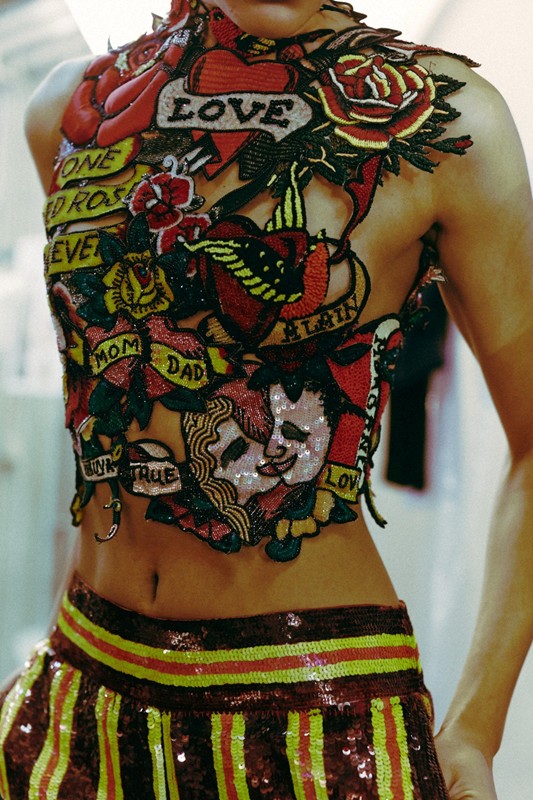LUCY FEIBUSCH discusses a new wave of tattoo culture, for cancer patients and fashion designers.
In the last two weeks the first of the BBC’s Bodyshockers Series came onto our screens, American cancer survivor Molly Ortwein’s story went viral and Belgian designer Maison Martin Margiela released his SS14 artisanal couture collection; 2014 has welcomed the diversity of the tattoo. Inundated with inky information, we have seen tattoos as reconstructive and fashionable; the start of dispelling vulgar and distasteful tattooed stereotypes.
The media consistently profits from public curiosity over regrettable permanent inkings, which is what I expected from the BBC’s ‘My Tattoo Hell’. However, although some mishaps do fit this category – one man had drunkenly had ‘JAPS’ tattooed across his eyelid, in order to become a walking pun, japs eye – in the documentary, presenter Katie Piper champions a regressive attitude towards all body ink.
Marion Hollier was the controversial, tattooed and topless model on the cover of Supertramp’s 1971 album Indelibly Stamped. Marion is now 65 and still loves her elaborate tattoos saying ‘I’m just different that’s all’. Katie epitomises an uptight middle class stereotype asking, disdainfully, ‘That can’t be a bad thing?’
In some defence for Katie, tattoos have earned themselves a bad name: prison tattoos are common on inmates, and there are multiple forums dedicated to the question ‘Is is ok for a Christian to get a tattoo?’ However, the latter’s ridiculousness is very telling of the kind of stigma surrounding permanent body ink, even if displayed on a good person or with personal preference or for a good cause.
This is where Molly Ortwein and Maison Martin Margiela come into play.
When 47-year-old Molly Ortwein met the surgeon who would perform her double mastectomy, he told her that she would be left with no nipples. Molly decided to laugh at it, and as her way of coping with her disease and perceived loss of physical femininity, she amazingly started ‘tips for nips’. She sent an email around her friends asking them to give her suggestions for what to do about her nipples. After rejecting, amongst others, the idea of becoming a party trick and inserting two chrome bottle openers in place of her lost nipples, she came up with P.INK, Personal Ink.
Through P.INK Molly has united thousands of breast cancer survivors going through reconstructive surgery, with ‘tattoo artists with something to give’.

Molly herself now has two beautiful pieces of artwork covering her chest, detracting from her scars and her lack of nipples. The designs are from a ‘rare and resilient’ flower from Brazil, she tells the camera proudly, before squealing ‘I’m so excited…. about being naked!!!’
I wonder, would Katie ask Molly if her tattooed individuality was a ‘bad thing’?
Maison Martin Margiela certainly would not. It seems Margiela would like the best of the high fashion to give into the urge of ink. On a striking piece in his SS14 artisanal couture collection, red hearts wrapped in yellow ribbons with the words ‘MOM’ and ‘DAD’ proudly emblazoned sit below a beaming and decorative yellow rose and beside a smiling couple kissing. All these images are embroidered with embellishments of beads and sequins. Although Henry Holland and Jean Paul Gaultier, among others, have previously used tattoos as inspiration for high fashion pieces, Margiela is now leading the way. There is no disguise in his inspiration, ripping exact tattoo designs from skin to clothing.
Tattoo culture has always had the potential to be constructive and artistic, if approached the right way (preferably without alcohol). However, now it seems that a fierce cancer survivor and a powerful fashion designer might have given society the kick it needs to appreciate its positive power.
Quite frankly, Molly and Margiela make me want to hop into the next tattoo parlour I see. Katie, don’t judge me.






